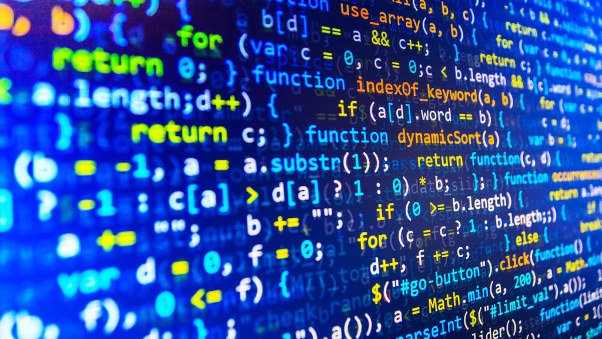Ethereum Classic Recursive Length Prefix Encoding
Ethereum Classic (ETC) uses Recursive Length Prefix (RLP) encoding. I will describe RLP and how it is used in ETC.
Introduction
Serialization is the process of encoding data structures into byte sequences. It is also referred to as marshalling and pickling. Serialization is necessary when storing and sending data structures.
RLP is a serialization format created by Ethereum developers for storage and communications. It is used for all data structures such as accounts, transactions and blocks. RLP is simpler than the alternatives such as Extensible Markup Language (XML), JavaScript Object Notation (JSON), Binary JSON (BSON), Protocol Buffers and Bencode.
RLP is also consistent. The same inputs are always converted to the same byte sequences. This is not true of all serialization formats. For example, when encoding sets of key value pairs, some schemes do not specify an ordering.
Details
RLP operates on byte sequences and lists. Lists can contain byte sequences and other lists. The interpretation of all inputs is handled by other protocols. For byte sequences, small headers are added which depend on the length. For lists, the elements are encoded separately and concatenated. As with byte sequences, small headers are added which depend on the length. Lastly, all lengths are encoded in big endian format.
Code
Here are Python functions which implement RLP encoding and decoding:
#!/usr/bin/env python3
import math
N_BITS_PER_BYTE = 8
def n_bytes(integer):
"""
Finds the numbers of bytes needed to represent integers.
"""
return math.ceil(integer.bit_length() / N_BITS_PER_BYTE)
def get_len(input, extra):
"""
Finds the lengths of the longest inputs using the given extra values.
"""
n_bytes = input[0] - extra
return 1 + n_bytes + int.from_bytes(input[2:2 + n_bytes], "big")
def rlp_encode(input):
"""
Recursive Length Prefix encodes inputs.
"""
if isinstance(input, bytes):
body = input
if (len(body) == 1) and (body[0] < 128):
header = bytes([])
elif len(body) < 56:
header = bytes([len(body) + 128])
else:
len_ = len(body)
len_ = len_.to_bytes(n_bytes(len_), "big")
header = bytes([len(len_) + 183]) + len_
result = header + body
else:
body = bytes([])
for e in input:
body += rlp_encode(e)
if len(body) < 56:
header = bytes([len(body) + 192])
else:
len_ = len(body)
len_ = len_.to_bytes(n_bytes(len_), "big")
header = bytes([len(len_) + 247]) + len_
result = header + body
return result
def rlp_decode(input):
"""
Recursive Length Prefix decodes inputs.
"""
if input[0] < 128:
result = input
elif input[0] < 184:
result = input[1:]
elif input[0] < 192:
result = input[1 + (input[0] - 183):]
else:
result = []
if input[0] < 248:
input = input[1:]
else:
input = input[1 + (input[0] - 247):]
while input:
if input[0] < 128:
len_ = 1
elif input[0] < 184:
len_ = 1 + (input[0] - 128)
elif input[0] < 192:
len_ = get_len(input, 183)
elif input[0] < 248:
len_ = 1 + (input[0] - 192)
else:
len_ = get_len(input, 247)
result.append(rlp_decode(input[:len_]))
input = input[len_:]
return result
Notice that the functions are recursive. Notice also that the functions work for inputs requiring up to about 18 million terabytes. Here are examples of their usage:
>>> rlp_encode(b"A")
b'A'
>>> rlp_encode(b"12345")
b'\x8512345'
>>> rlp_encode(20 * b"12345")
b'\xb8d1234512345123451234512345123451234512345123451234512345123451234512345123451234512345123451234512345'
>>> rlp_encode([b"12345"])
b'\xc6\x8512345'
>>> rlp_encode([b"abcde", 3 * [b"12345"], [b"fghij"], b"67890", 4 * [b"klmno"]])
b'\xf8\x85abcde\xd2\x8512345\x8512345\x8512345\xc6\x85fghij\x8567890\xd8\x85klmno\x85klmno\x85klmno\x85klmno'
>>> rlp_decode(b"\x8512345")
b'12345'
>>> rlp_decode(b"\xc6\x8512345")
[b'12345']
>>> rlp_decode(b"\xf8\x85abcde\xd2\x8512345\x8512345\x8512345\xc6\x85fghij\x8567890\xd8\x85klmno\x85klmno\x85klmno\x85klmno")
[b'abcde', [b'12345', b'12345', b'12345'], [b'fghij'], b'67890', [b'klmno', b'klmno', b'klmno', b'klmno']]
Conclusion
RLP is an elegant and approachable serialization format used extensively by ETC. It can be quickly mastered thereby illuminating this important aspect of the system.
Feedback
Feel free to leave any comments or questions below. You can also contact me by clicking any of these icons:
Acknowledgements
I would like to thank IOHK (Input Output Hong Kong) for funding this effort.
License
This work is licensed under the Creative Commons Attribution ShareAlike 4.0 International License.








